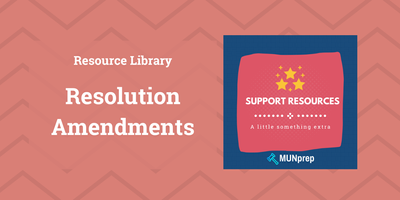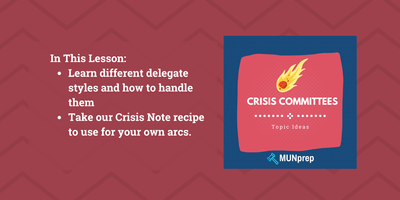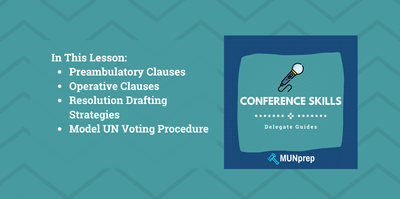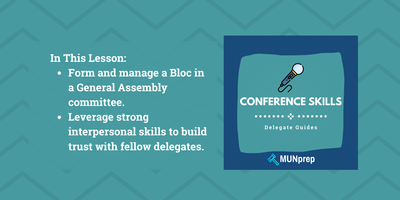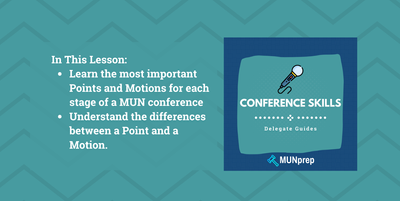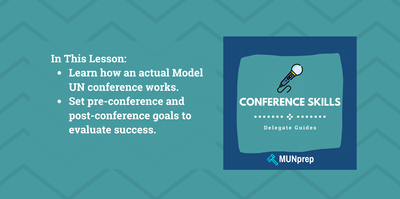MUN Speeches - Beating the 10 Minute Rule
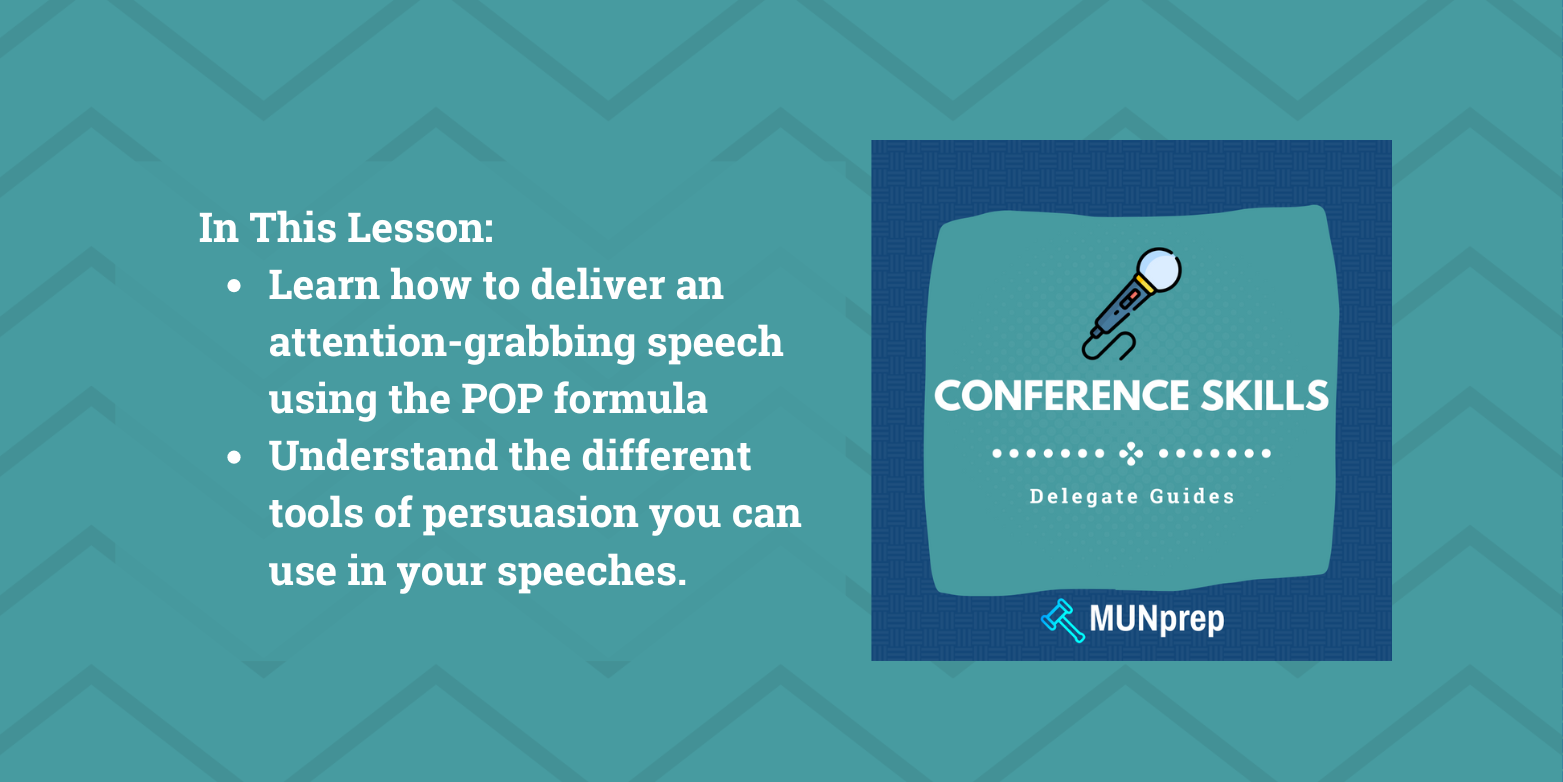
Strong public speaking doesn’t just help you deliver your ideas with clarity and confidence; it makes you memorable, helping you build alliances and beat the dreaded 10-minute rule.
It's not always easy to deliver engaging speeches every time you step up to the podium, but with simple tools like the POP formula, we'll set you up to focus on the actual content of your speech rather than overthinking the structure.
If you embrace the structures that we'll show you today, you'll be set up for success where everyone pays attention when you make a speech.
Speeches During the Moderated Caucus
Here we're covering the regular speeches that you will need to make during a Moderated Caucus- there are a few key features to these types of speeches:
Being a great public speaker can make or break your MUN experience - if you're not able to make your points stand out among the crowd, you're going to struggle to form those connections and your fellow delegates are going to fall asleep.

But it doesn't have to be like this.
If you do things right, you'll be able to pull in a crowd of delegates during the early unmoderated caucuses, and start the bloc building and leadership process like a pro.
That's why today we're going to walk you through all the tips and tricks we know on how to make an awesome speech.
As a side note, the types of speech we will be covering today are most common during a moderated caucus. We do also have guides on speech writing for an opening speech and committee skills for an unmoderated caucus if that's more your speed.
Ready? Let's get started.
Your Worst Enemy - The Ten Minute Rule
While its great to have an awesome range of tools ready for use in the persuasion toolbox, but at the end of the day, it doesn't really matter unless your audience pays any attention.
And unfortunately, you have a mountain to climb.
It turns out that your audience tunes out after about 10 minutes of discussion on any given topic. Since there will always be delegates speaking before you, it's hard to control whether the committee will be focused on what you have to say.

Fortunately, it is possible to bring them back - Thanks to a little bit of *pizzazz*
It's easier to do than you think - most delegates overthink their speeches during a moderated caucus, and that can do much more harm than good.

Lets show you what you need to do.
The two goals for any speech
- If you want people to listen - use the POP formula
- If you want people to remember - keep your message simple
Make them Listen: The POP formula

Example: “Climate change is the biggest challenge of our generation.”
Example: "The question is no longer why we act, but whether we are too late to act."
Example: "If we don't act now, sea levels will continue to rise, and hundreds of thousands of innocent people will lose their homes around the world"
Example: "That's why our resolution 'Project Seawall' by the delegations from Ukraine, Peru and Mexico needs to be passed so urgently"
Example: “Our planet needs us now. Let’s act before it’s too late.”
With a little POP, you'll always be able to make your point - if you don't have much time to prepare, just think of what your hook will be and follow it from there.

Getting in the Zone - Starting Your Speech off Right
Going from sitting and listening speeches to making one yourself can be a somewhat jarring experience.
I find that a short routine before every speech can help you get in the zone quickly. Something I do to start my speech is by giving the same thank you and introduction before every speech.
Whenever I get called I would say: "Thank you Chair, [pause] Fellow Delegates [rest of speech]"
As soon as I hit that introduction, I'm comfortable and ready to flow.
Make them Remember: The Rule of 3
In public speaking, simplicity reigns supreme, in fact Phil Crosby once said:
“No one can remember more than three points.”
This wisdom emphasizes the importance of brevity and focus when addressing an audience. When crafting a speech, especially in MUN just make sure you stick to a max of 3 ideas - frankly 1 will normally be more than enough.
If you ever find yourself able to make more than 3 points, remember that repetition can also be your friend. It's alright to mention the same point more than once in the same speech.
Want to learn more debate skills? Check out our guide here
Simple doesn't mean the same
Just because you're using the same formula for all of your speeches doesn't mean that they're all going to be the same.
Actually, because of the simplicity of the formula, you end up having far more freedom to try a whole host of speech varieties, knowing that you'll always be able to rely on the same recipe for success.
Here are just a few different speeches you could make using the POP formula:
- Summary Speech: Quickly recap key points in the discussion, reinforcing consensus or highlighting your delegation’s stance.
- Advocacy Speech: Promote your or your bloc's position, emphasizing your nation’s perspective on the issue at hand.
- Coming Together Speech: Encourage collaboration and unity among delegates, especially useful after intense debate.
- Issue Spotting Speech: Identify a new problem or angle within the broader topic, helping the committee recognize an area needing attention.
- Problem-Solving Speech: Suggest specific solutions or actions to resolve key issues.
- Post-Unmoderated Caucus Speech: Summarize progress made during informal discussions and highlight your achievements or call for additional action.
Learn more about the different types of moderated caucus here!
Your Persuasion Toolbox: Speeches That Pack a Punch
Every great speaker pulls from their own a “persuasion toolbox”—a set of techniques that bring a speech to life, making it engaging, credible, and memorable.
In the high-paced environment of a Moderated Caucus, these tools can help you capture attention, establish authority, and leave a lasting impression.
Make sure to mix some of these into your speeches as well:

Hook: The opening line of your speech is your first chance to grab attention and draw the room in. Spark curiosity and set yourself a foundation for the rest of your speech.
Facts & Figures: Credibility is key in MUN, and solid data can make your points much more persuasive. Interested in learning more? Check out our guide on using statistics in Model UN.
Quotes and References: Citing a powerful quote from a respected figure or a relevant policy document can bolster your credibility. Check out our list of MUN-worthy quotes here.
Analogies and Metaphors: Comparisons can simplify complex topics and make them easier to grasp. For example calling an economic crisis as a “domino effect” paints a vivid picture that’s easy to understand and relate to.
Repetition: Repeating a key phrase or concept helps reinforce your message and make it more memorable. This technique has been tried, tried and tried again - and it works every time.
Rhetorical Questions: Invite listeners to reflect on your points without expecting a direct answer, helping them engage with your message.
Calls to Action: Finish strong with a call to action. By inviting others to act, you show leadership and leave a final, compelling impression.
Final Tips to Thrive as a Delegate in Moderated Caucuses
As a few final reminders, make sure to remember a few standard delegate skills that will bring the best out of the skills we taught you:
With these strategies, you’ll be well-equipped to leave an impact on your peers and steer the direction of debate in your MUN committee. By mastering the Moderated Caucus and consistently delivering speeches that resonate, you’ll stand out as a delegate who’s confident, prepared, and ready to lead.
Next Lesson
Congrats! You're ready to deliver an awesome speech. Don't expect every speech to be perfect the first time around, you'll run into challenges as you work out the key obstacles. Before your conference, set yourself reasonable goals on what to expect and what you want to get out of your speeches.
In the next lesson, we're covering everything you need to know about Points, Motions and Model UN procedure!



